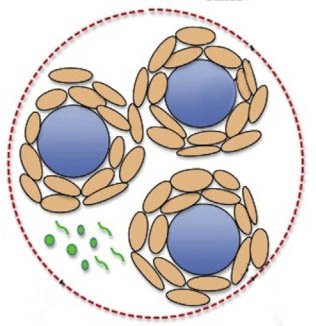
品牌:
货号:
规格:
目录价:
货期:
隐孢子虫培养(Cryptosporidium-culture)
The FiberCell hollow fiber system has been used to construct a long-term human gut model with these features:
An intestinal epithelial cell layer (HCT-8) cultured on the extra-capillary surface of the fibers with aerobic nutrient supply.
A separate anaerobic nutrient rich medium to simulate the gut lumen.
Intestinal epithelial cells differentiate into crypt-villus units covered with microvilli.
The fiber surface area (2100 cm2) provides efficient nutrient, metabolite and gas exchange between the cell layer and the re-circulating medium.
After 8 weeks of growth, the cartridge was cut open and slices of thin sections of the hollow fibers examined by Scanning Electron Microscopy. The intestinal epithelial cells had differentiated into crypt-villus units with microvilli (MV) covering them.
(A) Proximal end of the cartridge shows many craters (C) in the epithelial cell layer, typical of a C. parvum infection.
(B) Distal end of the cartridge has less epithelial damage and developmental stages are visible assacs covering the villi (DS).
Continuous culture of Cryptosporidium parvum using hollow fiber technology:Morada, M. et al.; Int J Parasitol. 2016 Jan;46(1):21-9
Cryptosporidium Culture
SEM images of HCT-8 cells cultured in HFBR

Intestinal epithelial cells infected with Cryptosporidium parvum
